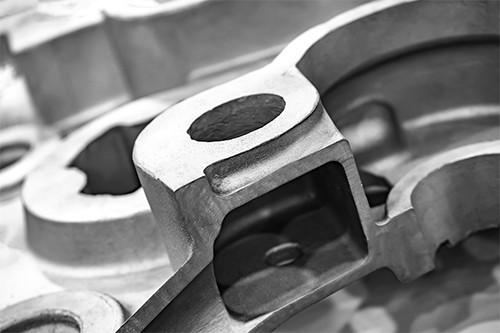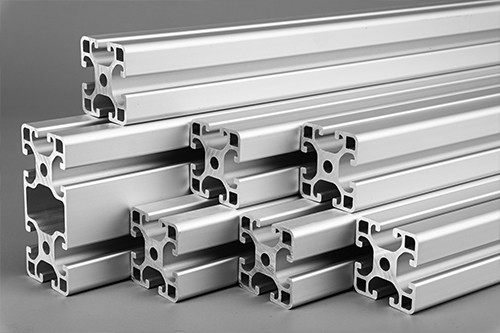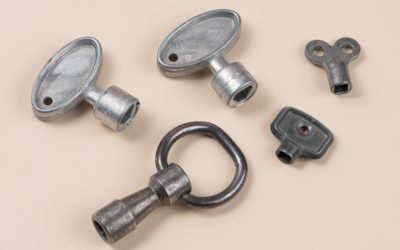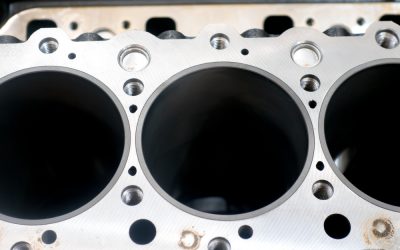If you’re designing a metal product, you’ve likely considered using aluminum as the base material. It has a high strength-to-weight ratio, good corrosion resistance, good formability, and aesthetic appeal. These factors have led to its increased popularity in recent years.
Pure aluminum has limited applications, so it is often combined with other elements, such as silicon, magnesium, and manganese to form alloys. Aluminum alloys are incredibly versatile, and you will find them in almost every facet of human life.
Different elements and amounts produce a wide variety of desirable physical and chemical properties. And the Aluminum Association (AA), based in North America, has created specifications that regulate aluminum alloys’ composition, properties, and nomenclature.
There are two types of aluminum alloys — wrought and cast. Foundry workers form these alloy types in different ways, which significantly impacts their characteristics. This article will help you understand how the various aluminum alloys are named, their physical properties, and their most common applications.
Table of Contents
An Overview of Cast Aluminum Alloys

Cast aluminum alloys are made by melting pure aluminum and combining it with other metals while in liquid form. Then the mix is poured into a sand, die, or investment mold. After solidification, the metal is removed from its mold. At this stage, it is in either its final form or as a billet or ingot for further processing.
The alloys are classified and named according to the amount and type of the alloying metals. The AA’s naming convention for these alloys takes the form of four digits, the third and fourth separated by a decimal point, which looks like this (XXX.X).
The first digit will tell you the primary alloying metals for each aluminum alloy, and it is the most important. You can use it to differentiate between different alloy “series” or “grades.”
For example, all aluminum alloys that start with a 2 are known as 2xx.x series or grade 2xx.x alloys. This digit can take any number from 1 to 8, except for 6, which is not used for cast alloys.
The following table shows which are the main alloying elements for each cast aluminum series, as well as the main characteristics that highlight each series and some example applications:
| Series | Main Alloying Element(s) | Main Characteristics | Example Applications |
|---|---|---|---|
| 1xx.x | 99.xx% pure aluminum | High electrical and thermal conductivity, excellent corrosion resistance. | Big electrical rotors. |
| 2xx.x | Copper and small quantities of magnesium | High strength but low corrosion resistance. | Cylinder heads and pistons, housings, and bearings. |
| 3xx.x | Silicon, copper, and/or magnesium | High strength and wear resistance. Good corrosion resistance. | Motor parts, structural parts, marine and aircraft castings. |
| 4xx.x | Silicon | Moderate strength, high ductility, and good impact resistance. | Bridge railing support castings, dental equipment, cookware. |
| 5xx.x | Magnesium | Moderate-to-high strength, high corrosion resistance, good machinability, and attractive appearance. | Architectural and ornamental castings, welded assemblies. |
| 7xx.x | Zinc | Good finish, good corrosion resistance, high strength through heat treatment. | Automotive parts, mining equipment, castings for brazing. |
| 8xx.x | Tin | Low friction. | Bearing and bushing applications. |
The second and third digits in the AA’s naming convention are assigned arbitrarily to identify the different alloys in each series. The exception is the 1xx.x series, where they denote the decimal percentage of aluminum content. For example, 160.0 represents a cast with a minimum of 99.60% aluminum.
The fourth digit, which comes after the decimal point, specifies if the alloy is a casting (xxx.0) or an ingot (xxx.1).
An Overview of Wrought Aluminum Alloys

Wrought aluminum alloys also start by combining molten aluminum with other metals. In contrast to cast alloys, however, they are formed into their final shape through processes such as extrusion, rolling, and bending after the metal has solidified into billets or ingots.
Their classification and naming system is also similar to that of the cast alloys. They are classified in series based on the main alloying elements. Their naming convention uses four digits (but without a decimal point), and the first digit states the main alloying elements.
The following table shows the main alloying elements to each of the wrought aluminum series, as well as the main characteristics that highlight each series and some example applications:
| Series | Main Alloying Elements | Principal Characteristics | Example applications |
|---|---|---|---|
| 1xxx | 99.xx% pure aluminum | High electrical and thermal conductivity, excellent corrosion resistance. | Electrical conductors and chemical processing equipment. |
| 2xxx | Copper | High strength-to-weight ratio, low corrosion resistance. | Truck wheels and suspensions, aircraft fuselage, and wings. |
| 3xxx | Manganese | Moderate strength and good workability. | General sheet work, recreation vehicles, electronics. |
| 4xxx | Silicon | Low melting point and thermal expansion, high wear resistance. | Welding wire and brazing alloy, architectural applications, forged engine pistons. |
| 5xxx | Magnesium | Moderate-to-high strength, good weldability, good corrosion resistance. | Appliances, automotive parts, marine components. |
| 6xxx | Silicon and magnesium | Medium strength with good formability, weldability, machinability, and corrosion resistance. | Structural applications, architectural extrusions, recreational equipment. |
| 7xxx | Zinc | Moderate-to-very high strength. | Airframe structures, mobile equipment, high-stress parts. |
The second digit in wrought alloy denominations, if not 0, will tell you if the alloy is a variation of the original alloy, i.e., alloy 6160 is the first variation of alloy 6060. The third and four digits are assigned arbitrarily to identify alloys in their respective series, again, except for the 1xxx series alloys, where the last two digits describe the aluminum purity in the alloy.
Wrought and Cast Aluminum: What’s the Difference?
There are many minor differences between wrought and cast aluminum alloys, such as that cast alloys can contain more significant amounts of other metals than wrought alloys. But the most notable difference between these alloys is the fabrication process through which they will go to deliver the final product.
Aside from some surface treatments, cast alloys will exit their mold in almost the exact solid form desired, whereas wrought alloys will undergo several modifications while in their solid state. This difference will have a significant impact on the possible forms and physical properties of the final products.
Factors to Consider When Choosing an Aluminum Grade
The main factors that will affect your choice of aluminum grade will be:
- The desired physical properties of your product, and
- The fabrication process that you want to use to obtain them.
This article can give you a good idea of the different properties and shapes you can expect from using die casting (cast alloys) and extrusion (wrought alloys) as forming processes. There are also other factors to consider, such as the cost of tooling, which is much higher for cast parts than extruded ones.
If you think that a wrought alloy may be the best for your project, take a look at some of our articles that explain more about specific wrought alloys, such as Alloy 6061 and Alloy 6063.
On the other hand, if you think a cast alloy would be better for you, you can learn more about some cast alloys in our Alloy 380 and Alloy 383 articles (coming soon).



